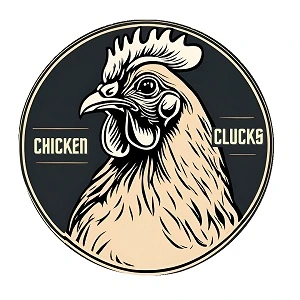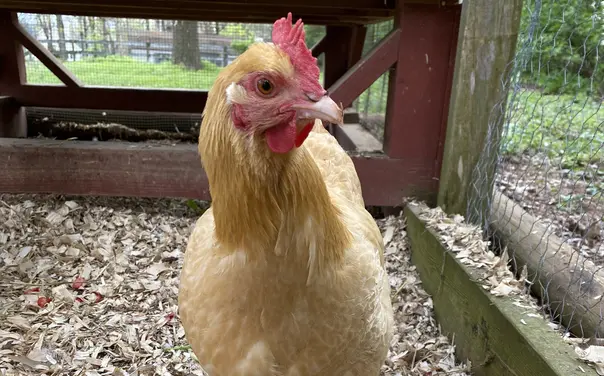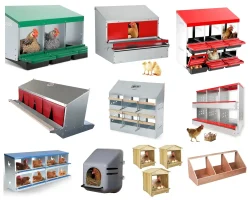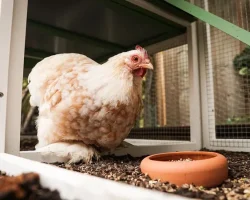Today, we are hopping into a popular topic in the world of chicken keepers: bedding. Since I have been raising chickens for many years, I’ve tried about every kind of bedding material out there. I’m excited to share my top picks for the best chicken bedding to keep your hens comfy and your coop clean.
Why Does Chicken Bedding Matter?
Before we get into my recommendations, let’s discuss why selecting the right bedding is essential. It’s not just about keeping your hens comfy, though that’s important. Quality bedding plays a critical role in managing moisture and odor, absorbing droppings, and maintaining proper insulation in your coop. Overall, this means happy hens, which often means more eggs!
Let’s take a look at my top seven chicken bedding options, ranked from the absolute best to least favorable.
1. Hemp Bedding: The All-Star Option
Hemp bedding takes the top spot on my list. Here’s why:
- Incredibly absorbent – we’re talking 4 times its weight in moisture
- Natural antibacterial properties, keeping your coop fresher
- Ability to reduce ammonia emissions compared to other bedding types.
- Excellent odor control, keeping your backyard smelling fresh
- Superb insulation for those chilly winter nights
- Biodegradable and eco-friendly
Yes, it’s a bit more expensive, but in my experience, it’s worth every cent. Your chickens will reward you with more eggs and fewer health issues. Since switching to hemp bedding, I’ve observed a notable decline in respiratory problems.
2. Wood Shavings: The Reliable Runner-Up
As a backyard chicken keeper, wood shavings, particularly pine shavings, are a fantastic and budget-friendly option. They are:
- Readily available and cost-effective
- Highly absorbent, keeping the coop dry
- Pleasant, natural scent that helps mask odors
- Easy to clean and replace (trust me, this matters when you’re scooping poop)
It’s important to note that wood shavings are generally safe, but…
Don’t use cedar shavings! Certain substances in cedar shavings are toxic to chickens and may cause respiratory issues and negatively affect egg production.
Also, make sure the wood shavings are dust extracted. Overall, a lot of dust is bad in any type of bedding. It can cause respiratory problems for your hens.
Pro tip: I use larger flakes for the coop floor and finer pine shavings for nesting boxes. This combo gives my hens the best of both worlds.
3. Straw: The Classic Choice
Straw, especially chopped straw, is a time-tested bedding material:
- Top-notch insulator, perfect for cold climates
- Absorbs moisture well, especially when chopped in shorter pieces
- Provides entertainment for chickens who love to scratch
- Top pick as bedding material in nesting boxes
- Affordable and easy to find
Straw is my top pick as bedding material in nesting boxes. Your hens can move it around to create a comfortable, cozy, and warm nest. The optimal combination is to start with a layer of wood shavings, and add straw on top.
If you want to learn more about nesting boxes, check out: Chicken Nesting Boxes: Top 10 Questions You Asked Google.
Another tip is that chopped straw outperforms whole straw significantly. It absorbs moisture more effectively. My chickens enjoy pecking and scratching in the straw. It gives them plenty of entertainment.
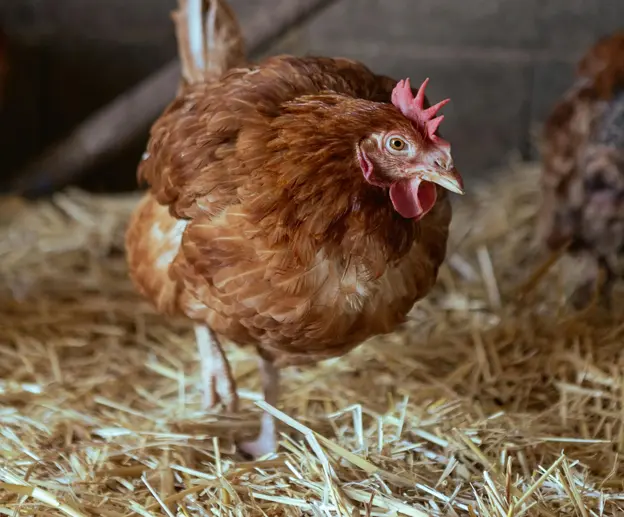
4. Sand: The Summer Superstar
Medium to coarse-grained sand can be an option, especially in warmer climates:
- Dries quickly, but is not the best at absorbing moisture
- Easy to clean with a cat litter scoop
- Provides a surface for dust baths
- Stays relatively cool in hot weather
However, it can be heavy and doesn’t provide much insulation in colder months. If you live in an area with hot summers, sand can be a lifesaver for keeping your flock comfortable.
5. Shredded Paper: The Recycler’s Delight
For the eco-conscious chicken keeper, shredded paper might sound like a good option. However, it would not be my first choice:
- Does not absorb moisture well
- Clumps and sticks together quickly
- Recycled and cost-effective (especially if you have a home shredder)
- Good insulator for winter months
I would not recommend buying shredded paper as bedding material. However, you might have some paper at home you want to recycle. I occasionally mix shredded paper with other bedding materials in my coop for a more balanced approach. It’s also suitable for nesting boxes. However, change it more frequently, because it tends to clump and stick together.
6. Hay: Proceed with Caution
While some swear by hay, and it absorbs moisture quite well, it comes with some risks:
- Can develop mold and fungus if not managed properly
- Dust might be an issue
- Chickens may eat it, potentially leading to crop issues
Overall, I do not recommend hay. If you opt for hay anyway, be sure to keep it dry and fresh. Hay serves better as nesting material than overall coop bedding. I’ve faced mold problems with hay. So only use it in small, manageable areas that you can easily monitor and replace regularly.
7. Corn Cob Bedding: The Experimental Option
Corn cob bedding is not as widely used, and I also would not recommend it. It deserves recognition for its unique benefits, but unfortunately has one major disadvantage:
- Biodegradable and eco-friendly
- Highly effective at absorbing odors
- Can be composted after use
- DOES NOT absorb moisture well
However, it may not be as readily available or cost-effective as other bedding options mentioned above. I’ve tried using it in particular areas of my coop. While it performs well in controlling odors, I avoid using it as my main bedding throughout the entire space due to its bad moisture absorption.
Choosing the Best Chicken Bedding for Your Flock
The best chicken bedding for your flock will depend on your specific situation, local climate, and the size of your flock. Don’t hesitate to experiment with different bedding options, or combine materials, to find the perfect fit for both you and your hens.
Consider these factors when making your choice:
- Climate: Insulating properties for cold weather or cooling effects for hot summers
- Flock size: Larger flocks produce more waste and may require more absorbent bedding
- Availability: Choose materials that are easy for you to source and replace
- Cost: Balance the initial cost with how often you’ll need to replace the bedding
- Your time: Some options require more frequent cleaning than others
- Safety: Ensure the bedding material is non-toxic and doesn’t contain dust or mold that could affect your chickens’ health negatively

The Deep Litter Method: A Year-Round Solution
The deep litter method can work well with several of these bedding materials. This approach involves allowing bedding to build up over time, creating a composting layer that generates heat and beneficial microorganisms.
Here’s a quick guide:
- Start with a 4-inch layer of your chosen bedding.
- Add a thin layer of fresh bedding weekly.
- Turn the bedding occasionally to aerate it.
- Clean out the entire coop once or twice a year.
Nesting Box Bedding: A Special Consideration
Though we’ve concentrated on bedding for the coop floor, I don’t want to overlook your nesting boxes! These spaces require soft, clean bedding to promote laying and safeguard your eggs. A combination of wood shavings and straw proves effective. Alternatively, you might explore specialized nesting pads that simplify cleaning.
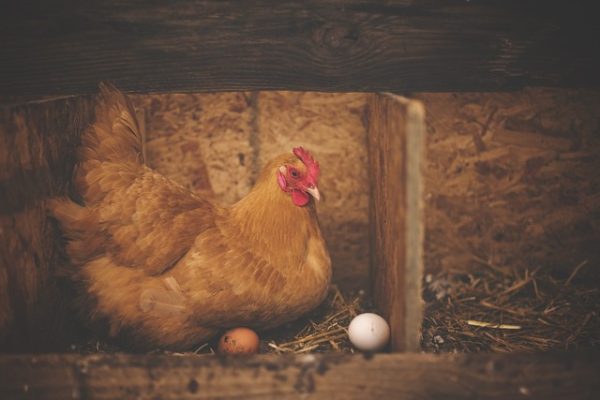
Maintaining Your Chicken Bedding
No matter which bedding you choose, proper maintenance is key to a healthy coop:
- Remove wet spots daily to prevent ammonia buildup.
- Add fresh bedding as needed to maintain a dry surface.
- Clean out the entire coop thoroughly at least twice a year.
- Monitor for signs of pests or mold, and address issues promptly.
You might also enjoy – How To Take Care Of Chickens In 8 Easy Steps
Seasonal Considerations for Chicken Bedding
As the seasons change, you may need to adjust your bedding strategy. Here’s what I’ve discovered over the years:
Winter Bedding Tips
- Increase the depth of bedding for better insulation.
- Consider using the deep litter method to generate heat.
- Ensure proper ventilation to prevent moisture buildup.
Summer Bedding Tips
- Opt for cooler materials like sand in hot climates.
- Clean more frequently to prevent fly infestations.
- Provide extra dust bathing areas to keep your chickens comfortable.
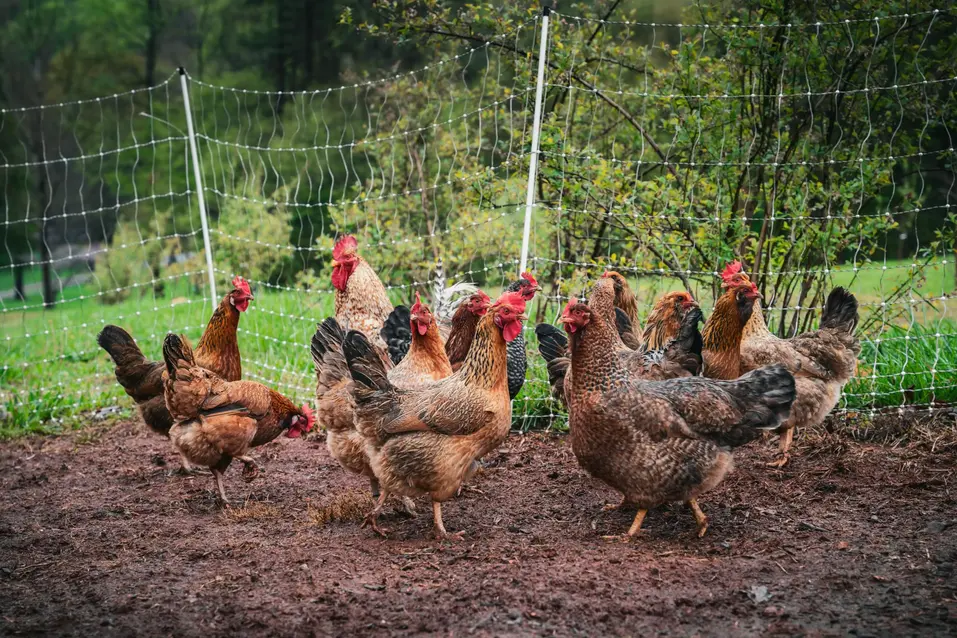
The Impact of Bedding on Egg Production
Believe it or not, your choice of bedding can affect egg production. Especially, the choice of bedding in your nesting boxes. Clean, dry bedding encourages hens to lay regularly and helps keep eggs clean. In my experience, comfortable hens are productive hens!
Composting Your Used Chicken Bedding
Okay, let’s talk a little on what to do with your soiled bedding. You definitely don’t want to just toss it. Most chicken bedding materials make wonderful compost. Here’s a quick guide to composting your used bedding:
- Mix used bedding with green materials (like grass clippings) at a 3:1 ratio.
- Turn the compost pile regularly to aerate.
- Monitor moisture levels – it should be damp but not soaking.
- Use the finished compost in your garden for nutrient-rich soil.
Final Thoughts
Selecting appropriate bedding for your hens is essential for effective coop management. Whether you choose hemp, wood shavings, straw, or a mixture of these, the priority is to maintain a clean, dry, and comfortable environment for your birds.
Remember, happy chickens make for a happy chicken keeper! Don’t hesitate to try different options to find what works best for you and your flock.
Happy chicken keeping!
